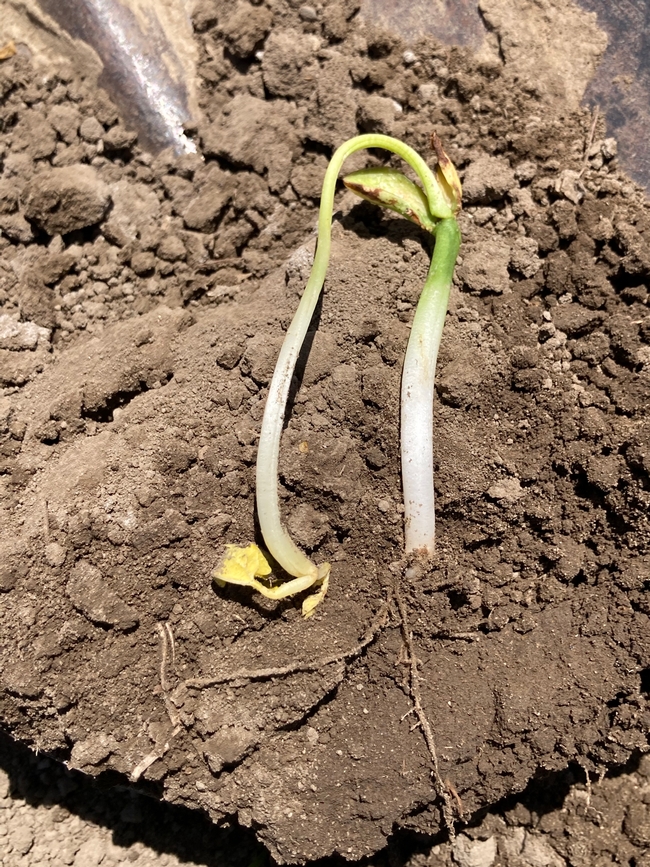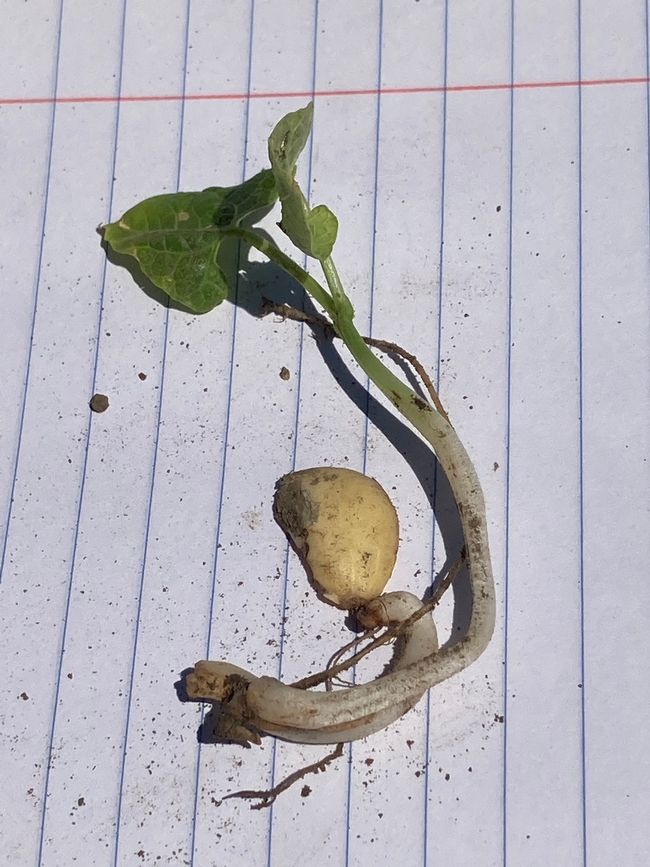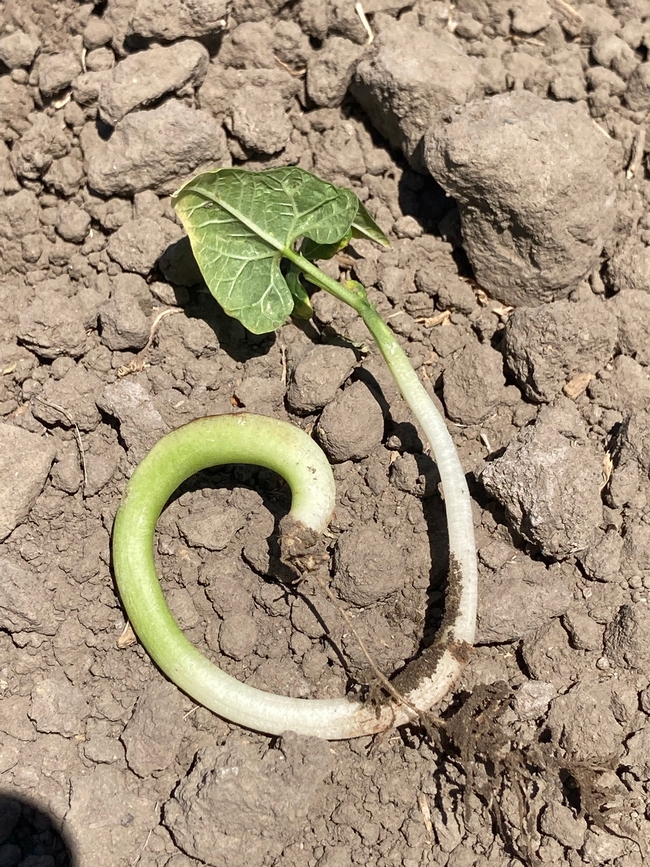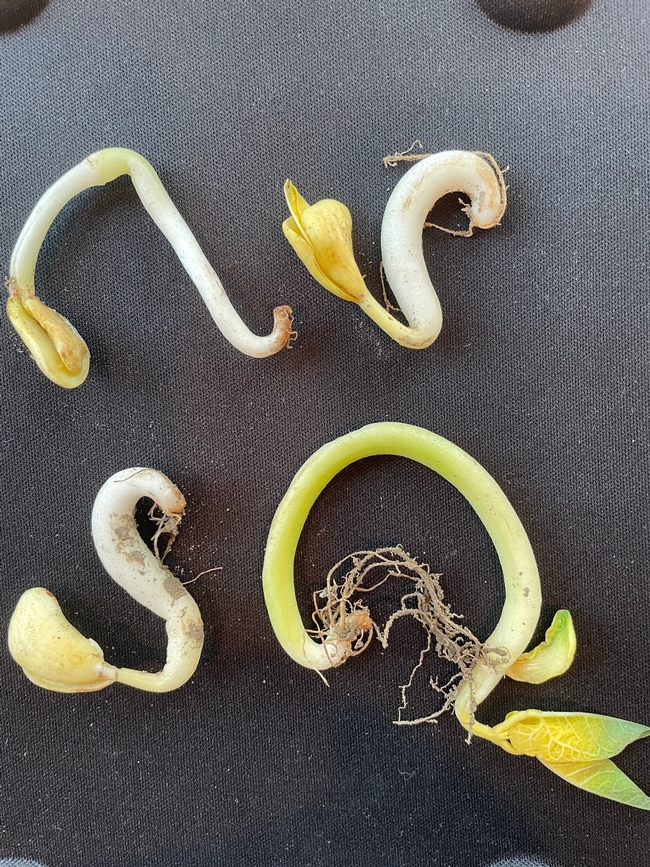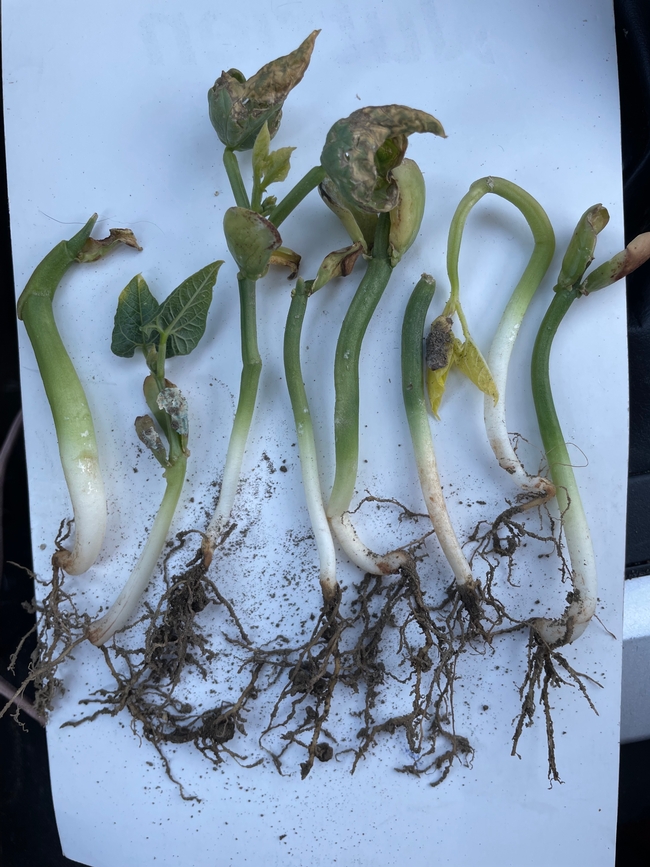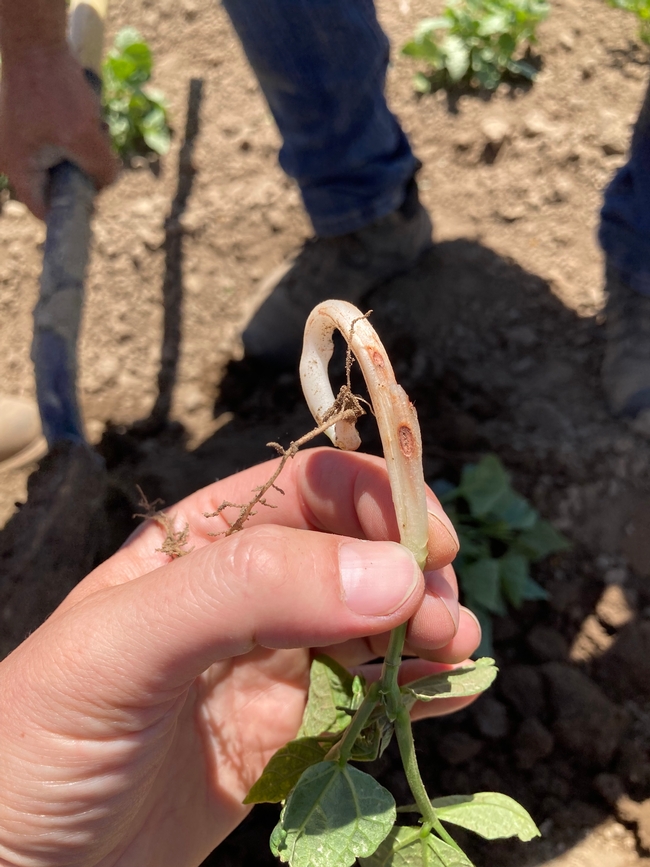Unusual growth patterns were observed in a newly emerging baby lima field in Colusa County that were planted in late April, prior to a cold snap. The grower planted the field into baby limas at 70 lbs of seed per acre. The field was planted on April 28th in 3-4” row spacing at a 1.5 to 1.75 inch seeding depth. Soil temperature at planting was 57 degrees. The grower applied a pre-plant mix of Brawl (S-metolachlor) and Sonalan (ethalfluralin) at labeled rates. In the two weeks after planting, when beans were germinating and emerging, there was a cold spell, with a low of 37F.
The grower and PCA observed unusual growth patterns in seedlings including twisted and u-shaped stems, plants emerging and then growing back into the soil, stunting of the leaves and new shoots, swollen hypocotyl, and rusty red lesions on stems near the soil line. Some plants appeared to have hollow stems. About 20% of the plants did not emerge or died.
Plant samples were collected on June 1st and taken to the UC Davis Plant Pathology lab. At the lab it was observed that the lesions and abnormal vascular tissue, which often indicate disease, were not active infection sites. The tissue was not rotting or necrotic with some damage appearing more callous where damaged tissue had a clear end, and healthy tissue began (lesions did not extend into the stem tissue as one would expect from an infection). This type of damage is usually abiotic (not caused by a pathogen). Overall, diagnostic tests confirmed that there was no evidence of a pathogen and concluded that damage was caused by abiotic factors.
Seedlings grow more slowing in cool conditions and the baby limas had more residence time in the soil following germination because of the cool weather conditions. This led the bean shoots to absorb some of the pre-plant herbicide mix in the moist soils. Herbicides are designed to modify plant growth and the symptoms observed match expected symptoms from the tank mix that was applied.
Sonalan is MOA 3 (mode of action) and inhibits root growth. Brawl is MOA 15 and inhibits seedling shoot growth. Both in combination lead to stunted malformed plants with swollen stems and stubby roots as we saw in the field. Increased exposure from cold weather in wet soils along with a bit of soil crusting due to high magnesium levels in the soil led to unfortunate injury. Fortunately, plants will typically fill in and grow out of this type of abiotic damage as the season progresses.
